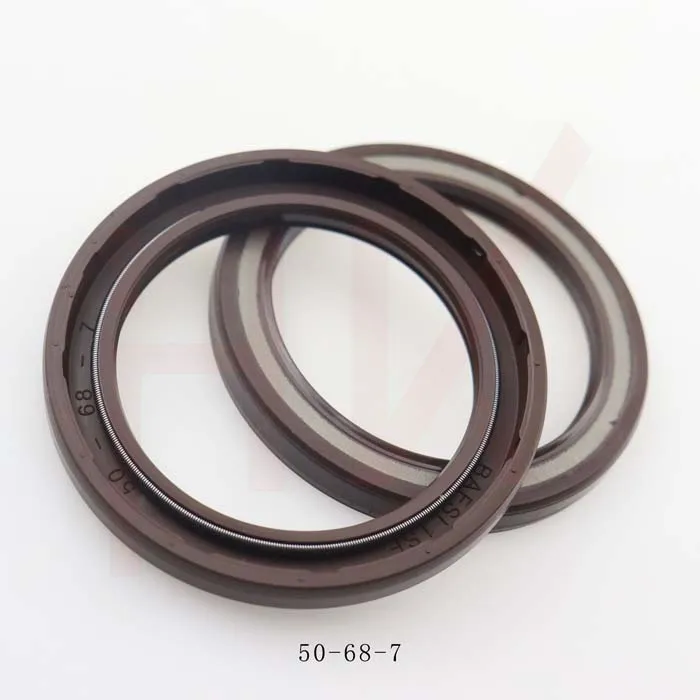Nov . 20, 2024 03:23 Back to list
rod wiper seal
Understanding Rod Wiper Seals Essential Components for Hydraulic Systems
Rod wiper seals are crucial components found in hydraulic systems that help maintain efficiency and prolong the lifespan of machinery. These seals are specifically designed to prevent contamination from entering the hydraulic system while also ensuring that hydraulic fluid remains contained within the cylinder. Understanding the role and functionality of rod wiper seals can significantly enhance the performance of hydraulic applications, particularly in industries such as construction, manufacturing, and automotive.
What are Rod Wiper Seals?
Rod wiper seals are positioned at the exterior end of hydraulic cylinder rods. Their primary function is to wipe away dirt, dust, and other potentially harmful contaminants that may adhere to the rod surface as it extends or retracts. The design of these seals often resembles a lip seal, featuring an elastic or rubberized material that comes into contact with the rod, creating a tight seal that minimizes leakage and keeps contaminants from entering the hydraulic system.
Importance of Rod Wiper Seals
The importance of rod wiper seals cannot be overstated
. Hydraulic systems operate under high pressure, and any contamination can lead to significant wear and tear on internal components, such as piston seals and bearings. The integration of rod wiper seals acts as the first line of defense against external particulates that can compromise the hydraulic system’s integrity.By keeping contaminants at bay, wiper seals help maintain the system's efficiency, reduce downtime for maintenance, and extend the overall service life of the equipment. This is particularly vital in environments such as construction sites, where hydraulic machinery is frequently exposed to dirt, mud, and other abrasive materials.
Types of Rod Wiper Seals
rod wiper seal

There are various types of rod wiper seals available, each designed for specific applications and environmental conditions. The most common materials used in wiper seal manufacturing include polyurethane, nitrile rubber, and fluorocarbon rubber.
1. Polyurethane Seals Known for their durability and resistance to abrasion, these seals are ideal for heavy-duty applications where wear resistance is a priority. 2. Nitrile Rubber Seals These are widely used due to their excellent oil resistance, making them suitable for most hydraulic fluids.
3. Fluorocarbon Rubber Seals Best for high-temperature applications, fluorocarbon seals can withstand harsh chemicals and extreme conditions without degrading.
Installation and Maintenance
Proper installation is critical to the effective performance of rod wiper seals. It is essential to ensure that the seals are mounted correctly, as improper installation can lead to premature failure and increased leakage. Regular inspection and maintenance can also significantly improve the lifespan of these seals. Checking for wear, cracks, or hardening can help in identifying issues before they escalate into more significant problems.
Conclusion
In conclusion, rod wiper seals are an integral part of hydraulic systems that play a significant role in ensuring efficiency and protecting against contamination. By understanding the various types of seals and their applications, as well as emphasizing proper installation and maintenance practices, industry professionals can optimize the performance of their hydraulic systems. Investing in high-quality rod wiper seals and regularly maintaining them can lead to increased productivity, reduced costs, and a longer service life for hydraulic equipment. As technology advances, the development of more robust and efficient rod wiper seals will continue to enhance the reliability of hydraulic systems across various industries.
-
TCN Oil Seal Metal Ring Reinforcement for Heavy Machinery
NewsJul.25,2025
-
Rotary Lip Seal Spring-Loaded Design for High-Speed Applications
NewsJul.25,2025
-
Hydraulic Cylinder Seals Polyurethane Material for High-Impact Jobs
NewsJul.25,2025
-
High Pressure Oil Seal Polyurethane Coating Wear Resistance
NewsJul.25,2025
-
Dust Proof Seal Double Lip Design for Construction Equipment
NewsJul.25,2025
-
Hub Seal Polyurethane Wear Resistance in Agricultural Vehicles
NewsJul.25,2025
-
The Trans-formative Journey of Wheel Hub Oil Seals
NewsJun.06,2025
Products categories
















